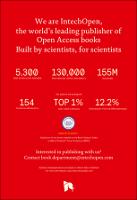Chapter Can Turn-Taking Highlight the Nature of Non-Verbal Behavior: A Case Study
Author(s)
Mlakar, Izidor
Rojc, Matej
Verdonik, Darinka
Majhenič, Simona
Language
EnglishAbstract
The present research explores non-verbal behavior that accompanies the management of turns in naturally occurring conversations. To analyze turn management, we implemented the ISO 24617-2 multidimensional dialog act annotation scheme. The classification of the communicative intent of non-verbal behavior was performed with the annotation scheme for spontaneous authentic communication called the EVA annotation scheme. Both dialog acts and non-verbal communicative intent were observed according to their underlying nature and information exchange channel. Both concepts were divided into foreground and background expressions. We hypothesize that turn management dialog acts, being a background expression, co-occur with communication regulators, a class of non-verbal communicative intent, which are also of background nature. Our case analysis confirms this hypothesis. Furthermore, it reveals that another group of non-verbal communicative intent, the deictics, also often accompany turn management dialog acts. As deictics can be both foreground and background expressions, the premise that background non-verbal communicative intent is interlinked with background dialog acts is upheld. And when deictics were perceived as part of the foreground they co-occurred with foreground dialog acts. Therefore, dialog acts and non-verbal communicative intent share the same underlying nature, which implies a duality of the two concepts.
Keywords
non-verbal behavior, non-verbal communicative intent, multimodal analysis, background expressions, regulators, deictics, turn-taking, dialog acts, ISO 24617-2DOI
10.5772/intechopen.95516Publisher
InTechOpenPublisher website
https://www.intechopen.com/Publication date and place
2021Classification
Society and Social Sciences


 Download
Download